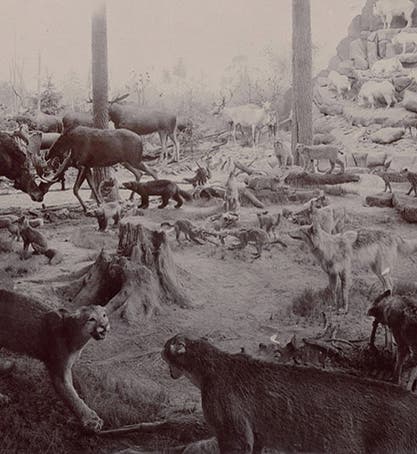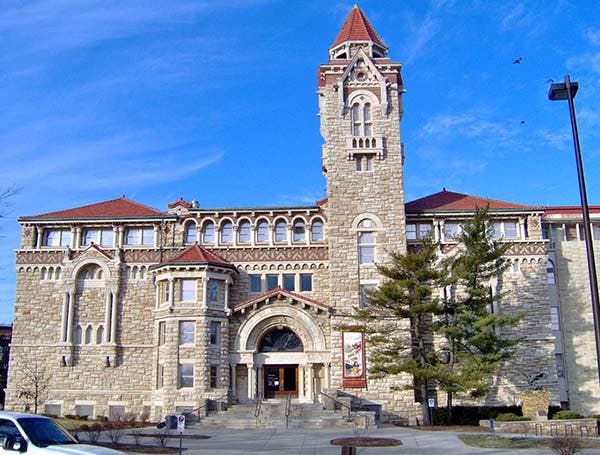Scientist of the Day - Lewis Lindsay Dyche
Lewis Lindsay Dyche, an American naturalist and taxidermist, was born Mar. 20, 1857. Dyche was a professor at the University of Kansas in Lawrence and got the idea of setting up an animal diorama at the World's Columbian Exposition in Chicago in 1893. Dioramas were a new phenomenon in museums; in fact, until Dyche, they were virtually non-existent. His Chicago diorama filled up one-third of the Kansas pavilion on the Chicago Midway; it was nearly 90 feet across, 60 feet deep, with 121 animals on display that Dyche had stuffed and mounted himself, with the aid of assistants. The animals included bison, grizzlies, mountain lions, elk, prairie dogs, and a pair of fighting bull moose; our first image is a photo of this taxidermic wonderland, taken in 1893. There was a papier-mâché hill of sorts at the back for the mountain goats, and Dyche built living quarters for himself inside the hill, with access provided by a moveable boulder, because he did not want to leave the specimens unguarded, for fear of theft or vandalism. Since the panorama was constructed over the winter of 1892-3, and the pavilion was unheated, the living conditions for Dyche must have been difficult.
The diorama was a big hit with visitors, and when the Exposition was over, Dyche returned with his diorama to KU; in 1901, the legislature authorized the construction of a permanent museum to house the Dyche mounted specimens. The building opened in 1903, a marvelous Neo-Romanesque building with a tower and arches and carefully carved animal ornaments. After Dyche's death, it would be renamed Dyche Hall, and it still stands (second image). The diorama was reconstructed inside, although now around a central viewing space, so it is now called the Panorama, and it is still on view (third image). At 126 years old, is one of the world’s oldest surviving museum dioramas.
One of the animals displayed at the 1893 exposition, although set apart from the diorama, was the horse Comanche, the only member of the U.S. Calvary to survive Custer's Battle of the Little Big Horn of 1876, and thence a hero to the Army and much of mid-America. When Comanche died in 1891, the U.S. Army gave Dyche the task of preserving the horse. His mount was widely praised, and Dyche was allowed to keep it in the KU Museum; it stands today, and after a 2005 refurbishing, is looking pretty spiffy (fourth image).
Many of the surviving portraits of Dyche show him in Arctic garb, since he was later involved in Frederick Cook's attempt to reach the North Pole. We show here one of those (fifth image).
Dr. William B. Ashworth, Jr., Consultant for the History of Science, Linda Hall Library and Associate Professor, Department of History, University of Missouri-Kansas City. Comments or corrections are welcome; please direct to ashworthw@umkc.edu.










